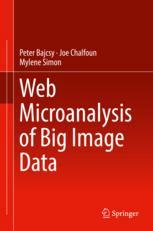

Most ebook files are in PDF format, so you can easily read them using various software such as Foxit Reader or directly on the Google Chrome browser.
Some ebook files are released by publishers in other formats such as .awz, .mobi, .epub, .fb2, etc. You may need to install specific software to read these formats on mobile/PC, such as Calibre.
Please read the tutorial at this link: https://ebookbell.com/faq
We offer FREE conversion to the popular formats you request; however, this may take some time. Therefore, right after payment, please email us, and we will try to provide the service as quickly as possible.
For some exceptional file formats or broken links (if any), please refrain from opening any disputes. Instead, email us first, and we will try to assist within a maximum of 6 hours.
EbookBell Team

4.3
78 reviewsThis book looks at the increasing interest in running microscopy processing algorithms on big image data by presenting the theoretical and architectural underpinnings of a web image processing pipeline (WIPP). Software-based methods and infrastructure components for processing big data microscopy experiments are presented to demonstrate how information processing of repetitive, laborious and tedious analysis can be automated with a user-friendly system. Interactions of web system components and their impact on computational scalability, provenance information gathering, interactive display, and computing are explained in a top-down presentation of technical details. Web Microanalysis of Big Image Data includes descriptions of WIPP functionalities, use cases, and components of the web software system (web server and client architecture, algorithms, and hardware-software dependencies).
The book comes with test image collections and a web software system to increase the reader's understanding and to provide practical tools for conducting big image experiments.
By providing educational materials and software tools at the intersection of microscopy image analyses and computational science, graduate students, postdoctoral students, and scientists will benefit from the practical experiences, as well as theoretical insights. Furthermore, the book provides software and test data, empowering students and scientists with tools to make discoveries with higher statistical significance. Once they become familiar with the web image processing components, they can extend and re-purpose the existing software to new types of analyses.
Each chapter follows a top-down presentation, starting with a short introduction and a classification of related methods. Next, a description of the specific method used in accompanying software is presented. For several topics, examples of how the specific method is applied to a dataset (parameters, RAM requirements, CPU efficiency) are shown. Some tips are provided as practical suggestions to improve accuracy or computational performance.